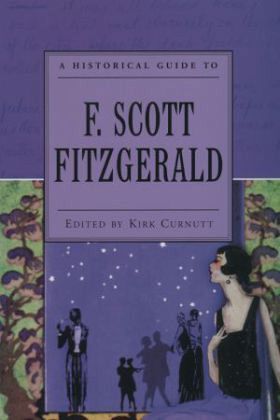
A Historical Guide to F. Scott Fitzgerald
Versandkostenfrei!
Versandfertig in 1-2 Wochen
75,99 €
inkl. MwSt.

PAYBACK Punkte
38 °P sammeln!
Although perceived in his own day as a lightweight chronicler of 1920s trends and fads, F. Scott Fitzgerald (1896-1940) is now recognized as one of the most important writers of the twentieth century. Whether for his classic novels (The Great Gatsby, Tender is the Night), his frequently anthologized short stories ("Babylon Revisited," "Bernice Bobs Her Hair"), or his searing essays of personal examination (The Crack-Up), Fitzgerald isrightly celebrated as a master stylist who plumbs the depths of love, loss, and longing. Unfortunately, much of the interest in Fitzgerald has focused on biograph...
Although perceived in his own day as a lightweight chronicler of 1920s trends and fads, F. Scott Fitzgerald (1896-1940) is now recognized as one of the most important writers of the twentieth century. Whether for his classic novels (The Great Gatsby, Tender is the Night), his frequently anthologized short stories ("Babylon Revisited," "Bernice Bobs Her Hair"), or his searing essays of personal examination (The Crack-Up), Fitzgerald is
rightly celebrated as a master stylist who plumbs the depths of love, loss, and longing. Unfortunately, much of the interest in Fitzgerald has focused on biographical concerns, including his meteoric rise to fame, his tempestuous marriage to quintessential flapper Zelda Sayre, his rivalry with Ernest Hemingway, and his tragic
descent into alcoholism and depression. The resulting, somewhat distorted, image of Fitzgerald has been that of as a self-destructive literary playboy. Even scholarly treatments of the author have tended to depict him as a mere spokesman for the Lost Generation, a symbol of the excesses of his era, without properly appreciating the range of his writing or his intellect. This volume of historically minded, newly commissioned essays looks beyond the Jazz Age façade to topics that reveal how
Fitzgerald's work both illumines and challenges conceptions of his milieu. Studies of the literary marketplace of the 1920s, the influence of public intellectuals such as Walter Lippmann and H. L. Mencken, film and its treatment of the New Woman, and the aftereffects of World War I all document the depth
and breadth of Fitzgerald's thinking.
rightly celebrated as a master stylist who plumbs the depths of love, loss, and longing. Unfortunately, much of the interest in Fitzgerald has focused on biographical concerns, including his meteoric rise to fame, his tempestuous marriage to quintessential flapper Zelda Sayre, his rivalry with Ernest Hemingway, and his tragic
descent into alcoholism and depression. The resulting, somewhat distorted, image of Fitzgerald has been that of as a self-destructive literary playboy. Even scholarly treatments of the author have tended to depict him as a mere spokesman for the Lost Generation, a symbol of the excesses of his era, without properly appreciating the range of his writing or his intellect. This volume of historically minded, newly commissioned essays looks beyond the Jazz Age façade to topics that reveal how
Fitzgerald's work both illumines and challenges conceptions of his milieu. Studies of the literary marketplace of the 1920s, the influence of public intellectuals such as Walter Lippmann and H. L. Mencken, film and its treatment of the New Woman, and the aftereffects of World War I all document the depth
and breadth of Fitzgerald's thinking.




